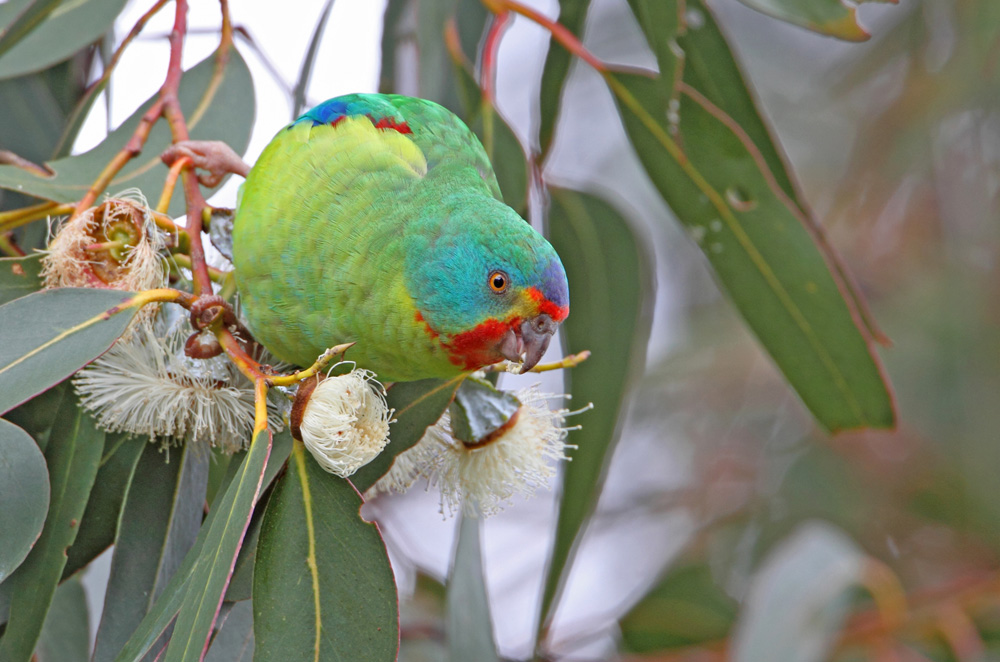It's time to spot a Swifty
Join us now, or at future events, to search for and spot a Swifty!
Their amazing journey
 The critically endangered Swift Parrot has started to arrive on mainland Australia, including NSW, after taking the long and treacherous journey across Bass Strait from Tasmania. The Swift Parrot, in fact, takes the longest migratory journey of any parrot in the world to spend the autumn and winter foraging in woodland across the south-eastern Australian mainland.
The critically endangered Swift Parrot has started to arrive on mainland Australia, including NSW, after taking the long and treacherous journey across Bass Strait from Tasmania. The Swift Parrot, in fact, takes the longest migratory journey of any parrot in the world to spend the autumn and winter foraging in woodland across the south-eastern Australian mainland.
Why they travel so far
On the mainland, Swift Parrots seek out eucalypt-dominated temperate woodlands with abundant blossom or lerp to feed on. The tree species favoured on the mainland, and indeed in Central West NSW, include Grey Box, White Box, Yellow Box and Mugga Ironbark. The Central West Local Land Services region contains some important habitat for the Swift Parrot.
Why they are threatened
Similarly to most woodland birds, the Swift Parrot population is in significant decline, mostly due to habitat loss and fragmentation. Additional threats on mainland Australia include aggressive and overabundant native nectarivores (like the Noisy Miner), collisions with infrastructure, and altered flowering patterns and lerp availability due to climate change.
What we are doing and how you can help
The Securing the Swift Parrot project aims to monitor areas of known and potential habitat, and now is the time to get out and try to spot a Swifty! Survey effort and any sightings recorded by the community and birdwatchers are critical to scientific knowledge and conservation of the Swift Parrot.
Swift Parrots aren’t easy to find but here's what to look for:
- Look for profusely flowering eucalypts (especially ironbarks and box)
- Search for other nectar-feeders, like lorikeets and small honeyeaters
- Learn the calls – Swift Parrot calls have a distinctive loud ‘pip-pip-pip’, particularly as they fly off. You can hear the call by visiting here: www.birdlife.org.au/bird-profile/swift-parrot
For more information on the Swift Parrot, or how you can help or contribute to saving this species, please contact May Fleming, Senior Land Services Officer, via phone: 0436 122 140, email: may.fleming@lls.nsw.gov.au.
This project is supported by Central West Local Land Services, through funding from the National Landcare Program.